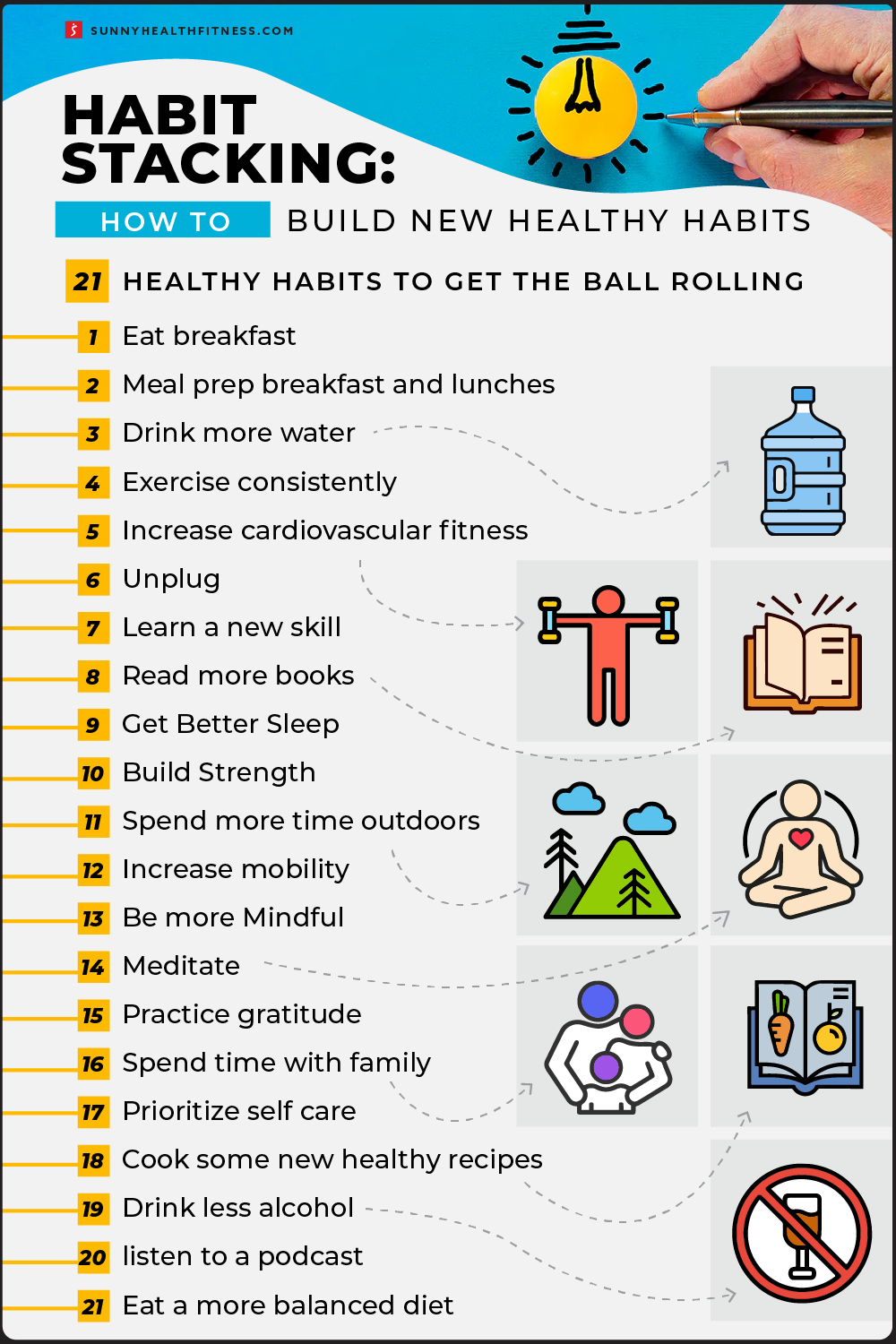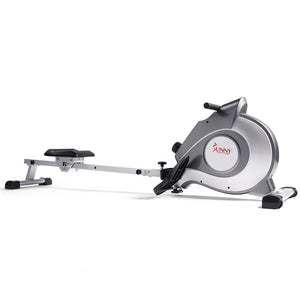Each year we start fresh, with the best intentions of setting New Year's resolutions and building new healthy habits. After all, new year, new you, right? Wrong. Rarely does it work. And before you know it, December is here again and you’re exactly where you started the year before.
Sometimes it can feel like goals and aspirations are reserved for the one percent. You know, those people who appear to have all the energy in the world, doing seemingly hundreds of healthy things each day, effortlessly. What’s their secret?
Enter: habit stacking. According to habit stacking, all you need to do to build an entire tower of new routine practices is to identify one thing you regularly do by default.
Whether your goal is to move more, eat a balanced diet, drink more water, or all of the above, habit stacking can help you get there.
So, what exactly is habit stacking and how to master it? Here’s the scoop.
What is Habit Stacking?
Habit stacking is the act of stacking a new habit with one you already do every day. For example, you identify an existing habit—like brushing your teeth or closing your laptop at the end of your workday—and build a new habit on top of it. Think: “After I brush my teeth, I will wash my face.” Just like an actual building, the stronger the foundational habit, the easier it will be to construct a new habit on top of it.
Habit Stacking Examples
To effectively stack habits, use this simple formula:
Before/After [CURRENT HABIT], I will [NEW HABIT].
For example:
- Before I leave the house, I will give my partner or kids a kiss goodbye.
- Before I brush my teeth, I will floss.
- Before sitting at my desk, I’ll fill up my water bottle.
- After I pour my coffee, I will read for 10 minutes.
- After I take off my work shoes, I will immediately change into my workout clothes.
- After I get into bed, I will say one thing I’m grateful for today.
You can use this formula to master any sort of habit, but the reason it works so well is your current habits are already built into your brain. By selecting habits that are already ingrained you’ll increase your chances of sticking to the new behavior.
Once you’ve mastered stacking two habits, try another, and another. This basic structure allows you to take advantage of the natural momentum that already exists in your day. Habit stacking allows you to create a set of simple rules that guide your future behavior. It’s like you always have a game plan for what action comes next.
Is Habit Stacking Effective?
Yes. Here are just a few reasons why:
- Relies on brain power you already have
- Serves as a built-in reminder
- Makes change less overwhelming
Why Is Habit Stacking So Effective?
Habit stacking is a type of implementation intention. Simply put, an implementation intention is just a plan of when and where you will do something. Habit stacking is a unique form of implementation intention that connects it with a specific habit—which may change time or location depending on the day—that always happens.
For example, whether you have coffee at 7am one day or 8am the next, you always have coffee. Whether you change into your pajamas in your own bedroom or a hotel room, you always change into your pajamas.
On the other hand, if you set a goal based on location or time, it can be hard (or impossible) to stick with it when life changes. A simple doctor's appointment or vacation can throw you off track, and once you’re off track we all know how hard it can be to get back on.
With habit stacking, no longer will you catch yourself asking do I write in my journal now or is later this afternoon better? When left with ambiguity, we often never end up doing the task at all. Habit stacking takes the guesswork out of when you’ll do something and creates a clear slot for it in your day.
How to Start Habit Stacking
Ready to give it a shot? Here’s a few things to consider before you do.
Choose a Realistic Cue
It all starts by determining what habits you already do every day that you could consistently stack on. Make a list of all the things that happen each day without fail. For example:
- Make the bed.
- Eat breakfast.
- Drink coffee.
- Sit down at your desk.
- Walk in the front door.
- Change out of your work clothes.
- Brush your teeth.
- Get into bed.
Armed with a complete list, start searching for the most practical place to layer a new habit into your lifestyle.
Be Extremely Specific
Make both the trigger and the new habit highly specific. Most people are too vague. For example: “When I take my lunch break, I will meditate.” At first glance, this looks like a great goal. But the trigger isn’t clear. When will you meditate? Before or after you eat lunch? For how long will you meditate? One minute or one hour?
Habits like “eat healthier” or “workout more” are well intentioned but don’t clearly define how and when to act. Be specific: “Before I eat my lunch, I will meditate for one minute at my desk.” The more tightly bound your new habit is to a specific cue, the more likely you are to do it.
Start Small
Baby steps are a surer path to success than leaps and bounds. For example, if the habit you’d like to adopt is working out for 30 minutes after getting out of bed in the morning, you’ll be more tempted to skip it if you’re running late or didn’t get good sleep. Instead, try something small like doing 10 pushups, or stretching for 5 minutes. Once you establish a smaller habit into your day, you can always add on to it later.
21 Healthy Habits to Get the Ball Rolling
Below, we’ve listed 21 ideas of healthy habits to work on for a healthier lifestyle. The list isn’t specific, which means you’ll need to add your own specificity if you plan to add one of them to your habit stack. Make it specific and meaningful to you.
- Eat breakfast.
- Meal prep breakfast and lunches.
- Drink more water.
- Exercise consistently.
- Increase cardiovascular fitness.
- Unplug.
- Learn a new skill.
- Read more books.
- Get better sleep.
- Build strength.
- Spend more time outdoors.
- Increase mobility.
- Be more mindful.
- Meditate.
- Practice gratitude.
- Spend time with family.
- Prioritize self care.
- Cook some new healthy recipes.
- Drink less alcohol.
- Listen to a podcast.
- Eat a more balanced diet.

Recommended Products






















